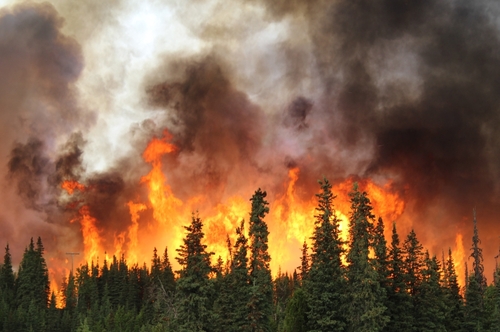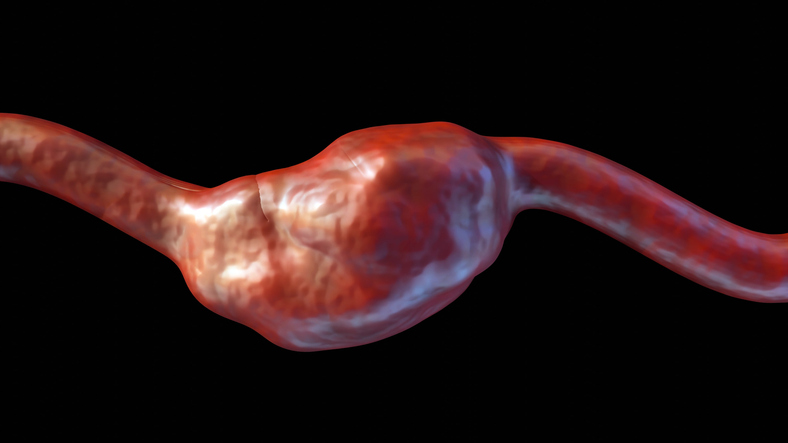
Findings from a recent study, published in JAMA Network Open, illustrate how wildfire smoke originating from western Canada in June 2023 was likely correlated with increased cardiopulmonary disease burden for residents of Baltimore, Maryland.
Mary E. Maldarelli, MD, of the University of Maryland-Institute for Health Computing, and a team of colleagues, conducted the study to investigate a potential link between wildfire smoke on the West Coast of the US and “cardiopulmonary disease burden in sociodemographically heterogenous populations in the Eastern US.”
It was important to conduct the investigation because, despite the increasing frequency of intense wildfires, little is known about the consequences of these wildfires on residential populations in the context of cardiopulmonary health, especially across large geographic regions.
The researchers extracted data from June 2018, June 2019, and June 2023, originating from the University of Maryland Medical System, to inform the case-only study. Cardiopulmonary disease codes from the International Statistical Classification of Diseases and Related Health Problems, Tenth Revision, were used to compare data from June 2023 against data from 2018 and 2019.
An analysis of the data was performed from September 2023 to September 2024, which focused on identifying “high air pollution episodes where the concentration of particulate matter with aerodynamic diameter below 2.5 μm (PM2.5) exceeded the toxic National Ambient Air Quality Standard (35 μg/m3) (referred to as “hotspot days”) on contiguous days.”
In addition, the investigators compared the number of patients who had documented encounters with several departments—including inpatient, ambulatory, and emergency departments—during specific hotspot days in June 2023 to the same days in the control years of June 2018 and 2019.
The analysis identified six hotspot days in Baltimore City in June 2023. June 6 to 8 and 28 to 30 of that year showed that PM2.5 levels increased by 9.4 times and 7.4 times, respectively, during those periods in Baltimore City.
Furthermore, the investigators adjusted the data to account for calendar days across the different years to study the volume of cardiopulmonary clinical encounters in June 2023 versus June 2018 and 2019. In June 2023, 2,339 cardiopulmonary encounters were identified. The mean age was 68 years, and 1,098 of those encounters included female patients (46.9%). Comparatively, in the control years, 3,609 encounters were documented, with a mean age of 65 years and 1,690 female patients (46.8%). Broken down further, 710 cardiopulmonary encounters in June 2023 were with Black patients (30.4%), and 1,528 were with White patients (65.3%). In the control years, 1,181 encounters were recorded with Black patients (32.7%), and 2,269, with White patients (62.9%).
Five hundred and eighty-eight cardiopulmonary encounters occurred on designated hotspot days in June 2023 (25.1%) versus 806 in the control years (22.3%) (χ2=6.07; P=.01). Further adjustment of the data to account specifically for cardiac disease demonstrated “a 20% increase in adjusted odds for a clinical encounter (aOR [adjusted odds ratio],1.20; 95% CI, 1.01-1.42; P=.04).” The study also found that patients with cardiopulmonary encounters on hotspot days experienced “greater socioeconomic advantage” in June 2023 compared with the control years.
Ultimately, the study found an increase in cardiopulmonary disease burden among Maryland residents that was “likely associated with contemporaneous wildfire smoke-based infiltration of polluted or toxic air originating from Western Canada up to 2,100 miles remotely.”
In a discussion of the results, the investigators pointed to other causes of cardiopulmonary disease burden in the area, including higher rates of socioeconomic disadvantages faced by patients in the region, which were likely exacerbated by the wildfire smoke. Those patients may have also been undertreated due to decreased access to care, according to the study authors.
“These data suggest that large and highly populous geographic regions not traditionally regarded as susceptible to the adverse effects of wildfire smoke, such as in the Eastern US, may nonetheless experience adverse health consequences associated with smoke from wildfires originating from remote distances,” the researchers concluded.
Source: JAMA Network Open







 © 2025 Mashup Media, LLC, a Formedics Property. All Rights Reserved.
© 2025 Mashup Media, LLC, a Formedics Property. All Rights Reserved.